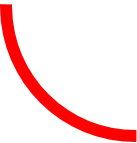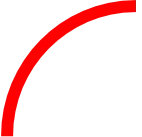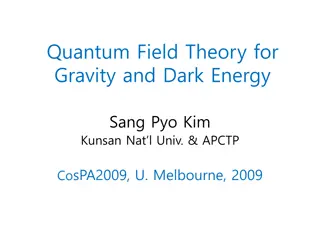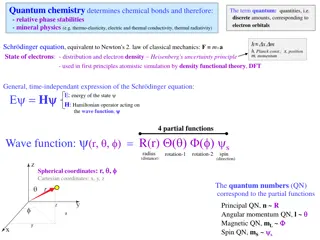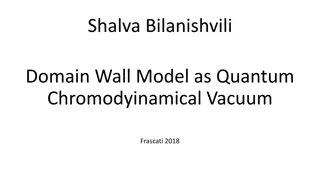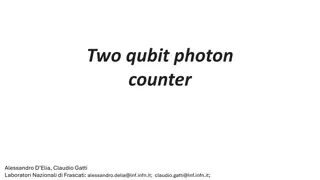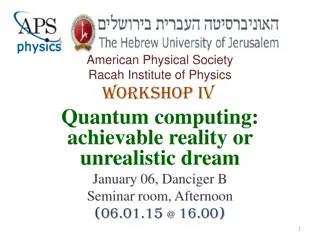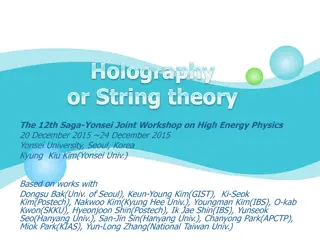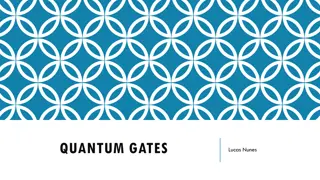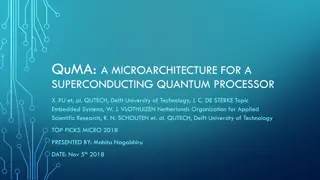Introduction to Quantum Chromodynamics & Field Theories in High-Energy Physics
Explore the fundamentals of Quantum Chromodynamics and Classical Field Theories in this informative lecture, covering topics such as global and local symmetries, Lagrangians, actions, and dynamics. Understand the significance of global and local symmetries in classical field theories, along with examples like scalar electrodynamics. Delve into the heavy-ion physics classes discussing how to make Lagrangians locally invariant and the dynamics involved in gauge theories.
Download Presentation

Please find below an Image/Link to download the presentation.
The content on the website is provided AS IS for your information and personal use only. It may not be sold, licensed, or shared on other websites without obtaining consent from the author. Download presentation by click this link. If you encounter any issues during the download, it is possible that the publisher has removed the file from their server.
E N D
Presentation Transcript
A VERY SHORT INTRODUCTION INTO QUANTUM CHROMODYNAMICS High-energy heavy-ion physics Lecture by M t Csan d E tv s University HEAVY ION PHYSICS CLASS 1
CLASSICAL FIELD THEORIES WITH GLOBAL SYMMETRIES Classical field theory: ?: finite-dimensional vector space ?: spacetime (Euclidian or Minkowski) Field to be described: ?:? ?; derivative of the field: ??:? ? ? (derivative indices encoded in ? ) Lagrangian: ?:? ? ? ? , ?,? ? ,?? ? Action: ? ? = ?? ???,?,?? ???, where ?? is the Lebesgue-measure over ? Physically realized field: where action ? ? is minimal Way to go: Euler-Lagrange equations ???2 Global internal symmetries: A bit complicated with Lie-groups and Lie-algebras, but: Let us have a group ? which has a representation ?:? Lin(?), i.e., ? ? can act on ? Essentially ? invariant to ? ? ? ?, where ? ? is a representation of group element ? ? Symmetry means we have gauge freedom , i.e., we are free to choose a gauge ? ?,? ? ,?? ? ?? = ?1? where ?0,1,2 denotes partial derivatives of ? ???,?,?? Example: ? = ??2 ? ?2, ? invariant for rotations which leave ?2 and ??2unchanged If ? is ?-dimensional, then ? = ??(?) is a global symmetry of the Lagrangian HEAVY ION PHYSICS CLASS 2
LOCAL SYMMETRIES What is a local symmetry? Recall ?:? ?, so ? ? ?, where e.g., ? = 3 Group ? is abstract, representation ?(?) is rotation over ? (in the above example, a 3x3 rotational matrix) Global symmetry: invariance for ? ? ? ? for any ? ? Example ? =1 Simpler example: ?:? , ? = ?(1) = {? , ?2= 1} or ?:? , ? = ?2= {1, 1} What if rotation ?( ) is depending on spacetime point ?? Mathematically: ? ? (?)= ? ? In this case however, ?? becomes ? ? ? ? ? = ? ? 2??2 ? ?2 and ? abstract rotations, represented by rotations over ? ?(?) ?? ? + ?? ? ? ? Locally invariant Lagrangian How can we make the above Lagrangian locally invariant? Let ?? = ?? ???????, ??are gauge fields, ?? are the generators of ?, ? is coupling constant ?? shall transform as: ?? ? ??? 1 If ? = ?(1) or ? = ?2, generator not needed , ? = ?? 3 , generators are unit rotations around the three axes To have dynamics (i.e., ??) we need Yang-Mills Lagrangian: ??=1 Here ??? Commutative groups:??? ? ??? ? 1 ??? ??? 4????, where ??? ???, yielding all commutations in the group ?= ???? ? ???? ?+ ???? ? ? are the structure constants of the group, ??,?? = ??? ?= 0, ??(2): ??? ?= 2i????, more complicated for ??(3) HEAVY ION PHYSICS CLASS 3
EXAMPLE FIELD THEORIES Scalar electrodynamics Lagrangian: ? = ??2 ? ?2 with ?:? Group: ? = ? 1 , structure constants: ? = 0, single 1D generator ??= ?? ????, ? is electromagnetic field, coupling constant is electric charge ? Gauge dynamics: ???= ???? ???? Electrodynamics Lagrangian: ? = ? ????? ? ? with ?:? 4 (4: because of spin) and ?? are the Dirac-matrices Group: ? = ? 1 , structure constants: ? = 0, single 1D generator ??= ?? ????, ? is electromagnetic field, coupling constant is ? Gauge dynamics: ???= ???? ???? Chromodynamics (possibly quantized later) Lagrangian: ? = ? ????? ? ? with ?:? 3 4 6 (color, spin, flavor) and ?? the Dirac-matrices Group: ? = ?? 3 (only in color, others not symmetries), structure constants: ? = (complicated) Generators: ?? Gell-Mann matrices, correspondingly 8 gauge-fields ?? ?, coupling constant ? HEAVY ION PHYSICS CLASS 4
QUANTIZED FIELD THEORIES Field ? or ?: already in quantum mechanics, particle represented by wave-function Next step: fields also quantized; particles connected to representations of symmetry group Main question: how to calculate observables (e.g., cross-sections, transition amplitudes) In the path integral formalism: Transition amplitude: ? ? ????? 0 Integrals depicted via diagrams, based on Lagrangian ??(?,??)?? ; sum over all possible paths = ??exp ? 0 Possible processes drawn on Feynman diagrams of various complexity Complicated concepts, impossible to review here Need for regularization & renormalization Another not covered important concept: symmetry breaking Running coupling constant: will depend on energy scale HEAVY ION PHYSICS CLASS 5
QCD LAGRANGIAN AND FEYNMAN DIAGRAMS Classical Lagrangian: ? = ? ????? ? ? 1 ??? 4????, where ??? ?= ???? ? ???? ? 2???? ??? ? Invariant under ??(3) transformations, generators: Particles: quarks (?) and gluons (?) Feynman diagrams include gluon-gluon interaction Because of third- and fourth-order terms in Lagrangian, due to ??? ? 0 Gluon propagator needs gauge fixing Results in so-called ghost fields (not discussed here) Closed gluon loops to be exchanged by ghost particle loops Each vertex results in a term contains ? or ??=?2 4? Perturbative QCD: expansion as ? = ?0+ ???1+ ??2?2+ Leading, next-to-leading order (NLO), etc calculations HEAVY ION PHYSICS CLASS 6
MOST BASIC QCD MEASUREMENTS Electron-positron annihilation, ?+? ? ? Angular distribution reveals quark spin Gluon radiated: 3 jets, ~10% of all events, ?? 0.1 Angular distribution reveals gluon spin Four-jet events reveals 3-gluon vertex and non-Abelian nature HEAVY ION PHYSICS CLASS 7
HOW DO WE KNOW THE NUMBER OF COLORS? Electron-positron collisions, producing muons or hadrons 2 Muon production cross-section: ??+? ?+? = 4???? 3? 2 Quark production cross-section: ??+? ? ?=4???? 2 ?? ??? 3? ??+? ? ? ??+? ?+? = ?? ??? 2; tells number of colors (??) and helps indentifying flavors Ratio: ? = Peaks: resonances HEAVY ION PHYSICS CLASS 8
REPRESENTATIONS OF SU(3) Lie group: a group that is also a smooth manifold (needed for local invariance) Lie group SU(3): group of unitary transformations in 3D with determinant 1 Lie algebra: tangent space of Lie group at the identity, non-associative algebra, (?, ) ?, Lie algebra of SU(3): ? = ??= ? (or in physics, ?) and Tr ? = 0 Generators: traceless Hermitian complex ? ? matrices, e.g., Gell-Mann matrices Irreducible representations: Fundamental: 3-dimensional, denoted: 3 and 3 (quark and antiquark fields in this representations) Adjoint: 8-dimensional, denoted 8 (gluon fields in this representation) Others: 6, 6, 10, 10, Reducible representations: composite particles in color singlet representation Mesons: 3 3 = 1 8 Baryons: 3 3 3 = 1 8 8 10 Tetraquarks: 3 3 3 3 = 1 8 10 10 27 Pentaquarks: HEAVY ION PHYSICS CLASS 9
QUARK MULTIPLETS AND FLAVOR SU(3) Approximate flavor symmetry among u-d-s quarks Flavor SU(3) Hadron multiplets organized by SU(3) representations Pseudoscalar meson octet ?,?,? (plus singlet ? ) Vector meson octet ?,?,?,? Barion octet (? = 1/2) ?, , , Barion decuplet (? = 3/2) , , , ( ++ revealed color, confirmed quark model) HEAVY ION PHYSICS CLASS 10
RUNNING COUPLING OF QCD Closed loop contributions in Feynman diagrams: yield divergencies for momentum Renormalization: redefine parameters (coupling, masses) to contain divergencies Renormalization performed at given mass scale, parameters become scale dependent ??? , ??(?) Scale dependence of coupling constant: ????2 ? log ?2= ? ???2 , ? = ??(?0+ ?1??+ ) Negative sign of ? function: ?? decreases with increasing scale (?), interaction becomes weak at large energies ?0= 11?? 2??/12?, where ??: QCD color factor, ??: number of QCD flavors Solution: ???2= 1/?0log?2/ 2, where 0.2 GeV Landau pole (?? diverges) Asymptotic freedom and confinement Energy ~ inverse distance; ?? increases with distance Small distance, large energy: weak interaction, perturbative QCD regime Large distance, small energy: strong interaction, confinement, bound states HEAVY ION PHYSICS CLASS 11
ASYMPTOTIC FREEDOM AND CONFINEMENT Running of the coupling constant with energy exchange ??(?) Effective QCD potential: ? ? ~1 ? at small distances, ? ? ~? at large distances ? ? = ?? ? ?+ ? HEAVY ION PHYSICS CLASS 12
METHOD OF PQCD CALCULATIONS: FACTORIZATION Perturbative calculations possible if ?? 1 Calculations rely on factorization Parton distribution functions ?(?): distribution for given parton at given Bjorken-? Partonic cross-section ??+? ? Fragmentation function ? ? : probability of parton fragmenting to given hadron at mom. fract. ? proton fragmentation function parton distribution function HEAVY ION PHYSICS CLASS 13
EXAMPLE RESULTS FROM PERTURBATIVE QCD pQCD works very well for intermediate to high momentum LHC jet spectra HEAVY ION PHYSICS CLASS 14
QCD AT SMALL ENERGIES OR LARGE SCALES Recall ?? increasing for small energies: ~0.5 at 1 GeV, increases sharply below Perturbative calculations (in orders of ??) do not work any more How to do calculations without perturbation theory? Discretize space-time and do numerical calculations! Recall appearance of exp ? ? in transition amplitude or cross-section calculations Let us do a rotation to have Euclidian space instead of Minkowski space: ? ??4 Integrals become: exp ? Discretize this integral over space-time ?? ? ?, ?? ?/?, ?? ???(values on lattice) With periodic boundary conditions Lattice spacing ?, lattice size ? Statistical methods will work ? ?/ ? ??classical statistical methods usable HEAVY ION PHYSICS CLASS 15
RESULTS OF LATTICE QCD Need to overcome a few issues Lattice spacing: UV cutoff, regularization Local invariance also on lattice? Fermion doubling Continuum limit A few input parameters required Hadron masses predicted from that correctly HEAVY ION PHYSICS CLASS 16
QCD PHASE DIAGRAM FROM LATTICE 2 ?? ?? Curvature of ???? = ??0 How about ??> 0? calculated 1 ? + Major issue: the sign problem, Monte-Carlo importance sampling impossible for ??> 0 Analytic continuation; no critical point seen up to ~400 MeV HEAVY ION PHYSICS CLASS 17

 undefined
undefined
